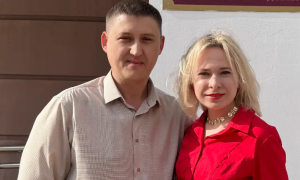What comes to your mind when you hear of May Day? Parades and demonstrations? Maypole dancing? A day off work?
DEPENDING on where you live, completely different views of May Day may come to mind. But they are connected. A brief look at the roots of May Day will shed light on its observance today.
Early Origins
In ancient Rome the first day of May fell during the festival of Floralia, named in honor of Flora, the goddess of springtime and flowers. It was a time of singing, dancing, and flower-decked parades. Roman prostitutes especially enjoyed the festival, for they considered Flora their patron goddess.
When the Romans conquered other lands, they took their customs with them. However, in Celtic countries the Romans discovered that the first day of May was already celebrated as the festival of Beltane. The preceding evening, the start of the Celtic new day, all fires were extinguished, and when the sun rose, people lit bonfires on hilltops or under sacred trees to welcome summertime and the renewal of life. Cattle were put out to pasture, and the gods were invoked for their protection. Soon Floralia became entwined with Beltane and became the festival of May Day.
For German-speaking and Scandinavian peoples, Walpurgis was the equivalent of Beltane. Festivities began on Walpurgis Night with the lighting of bonfires to drive away witches and evil spirits. Other Europeans developed their own variations of May Day customs, many of which still survive.
Christendom’s churches had little effect on such pagan festivities. “May Day—or Beltane—was the calendar’s most permissive day, the one festival the Christian church and other authorities could never quite control,” observes England’s Guardian newspaper.
May Day Customs
By the Middle Ages, new customs had been added to what had become England’s favorite holiday. Men and women spent the night in the local woods gathering flowers and blossoming boughs to ‘bring in the May’ at sunrise. Immorality was widespread, according to Puritan Philip Stubbes’ tract The Anatomy of Abuses. Revelers set up a tree as a Maypole in the middle of a village, and it became a focus for day-long dancing and games. Stubbes referred to it as “this stinking Idol.” The people chose a May queen and often a May king to preside over the festivities. Maypoles and May queens were common in other parts of Europe too.
What was the significance of these May Day customs? The Encyclopædia Britannica explains: “Originally such rites were intended to ensure fertility to the crops, and by extension to cattle and human beings, but in most cases this significance was gradually lost, and the practices survived merely as popular festivities.”
Ebb and Flow
The Protestant Reformers tried to stamp out what was viewed as a pagan celebration. Calvinist Scotland prohibited May Day in 1555. Then a Puritan-led English Parliament banned Maypoles in 1644. When England was without a king during the Commonwealth period, May Day’s “licentious practises” were discouraged. However, Maypoles were restored with the monarchy in 1660.
Maypole festivities gradually declined during the 18th and early 19th centuries but have been revived in more recent times with a more moral tone. Many of what are viewed as traditional May Day customs, such as children dancing round the Maypole plaiting gaily colored ribbons, date from this more recent time. However, folklorists researching May Day’s more distant past are discovering many of its pagan roots.
European emigrants took their May Day customs with them to new lands, and some of their descendants still observe May Day in the traditional way. However, in many countries May Day, or the first Monday following May 1, is now simply a workers’ holiday.
May Day Becomes Labor Day
The parades and demonstrations of the modern May Day began in North America. Why there? The industrial revolution brought new machines that ran continuously, with the result that factory owners often expected their employees to work up to 16 hours every day except Sundays. In an effort to improve the lives of workers, a federation of trade and labor unions in the United States and Canada called for an eight-hour workday beginning on May 1, 1886. For the most part, employers refused to grant this, so on the first of May, thousands of workers went on strike.
The Haymarket Riot in Chicago, Illinois, gave the labor movement in the United States its first martyrs, and workers in England, France, Holland, Italy, Russia, and Spain rallied in support. In 1889 a congress of world Socialist parties meeting in Paris declared that May 1, 1890, would be a day of international demonstrations in favor of an eight-hour workday. The date thereafter became an annual occasion on which to raise workers’ demands for better working conditions.
In republics of the Soviet Union, May Day was traditionally celebrated with military parades and displays of technological achievements. Today many countries observe a holiday called Labor Day or International Workers’ Day on the first of May. The United States and Canada, however, celebrate Labor Day on the first Monday in September.
Ancient and Modern Links
May Day has always been a people’s festival. Workers took the day off with or without their employers’ approval. Social roles were reversed. The king and queen of the day were chosen from the common people, and the ruling classes were often the butt of jokes. May Day, therefore, readily became identified with labor movements, and by the 20th century, it had become part of the Socialist calendar.
Like the old May Day, the International Workers’ Day has become a day for parades through the streets. Yet, violence has become common during May Day celebrations in recent years. May Day 2000, for example, was the occasion for worldwide rallies against global capitalism. Protests then were marred by fights, injuries, and damage to property.
Satisfying the Need for Change
Realistically, can we expect humans to bring about the necessary global changes that will benefit all honesthearted ones? Not really. The truth of the ancient Bible proverb has repeatedly been realized, namely: “It does not belong to man who is walking even to direct his step.”—Jeremiah 10:23.
A superior power—beyond that of humans—is required to bring about peaceful world conditions. The Source of that power is earth’s Creator, Jehovah God. His Word, the Bible, speaks of him as “opening [his] hand and satisfying the desire of every living thing.” (Psalm 145:16) We welcome you to examine further God’s grand promises.
In fulfillment of the model prayer that God’s Son, Jesus Christ, taught his followers, God’s Kingdom will come, and God’s will is sure to be done on earth. The Bible promises that God’s appointed Ruler, Jesus Christ, “will deliver the poor one crying for help, also the afflicted one and whoever has no helper. He will feel sorry for the lowly one and the poor one, and the souls of the poor ones he will save. From oppression and from violence he will redeem their soul.”—Psalm 72:12-14.





